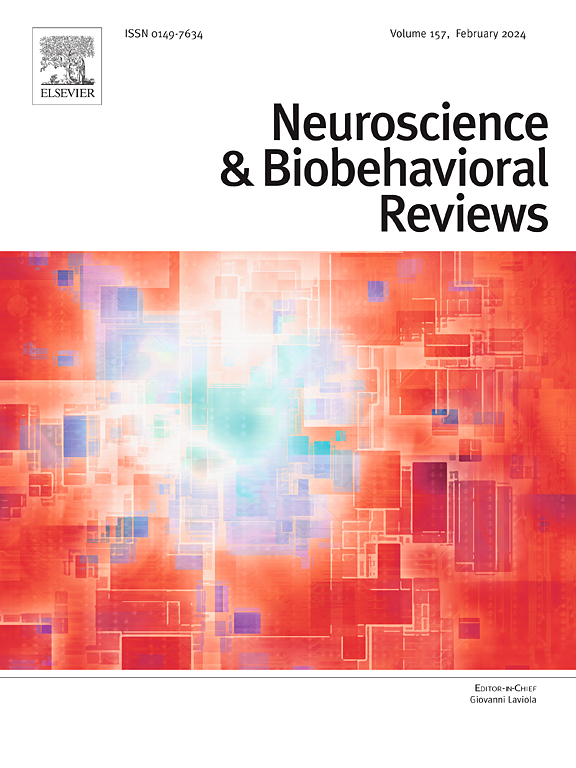觅食和惯性:理解显性视觉注意的发展动态。
IF 7.5
1区 医学
Q1 BEHAVIORAL SCIENCES
引用次数: 0
摘要
在生命早期,我们发展了选择关注和忽略什么的能力,使我们能够在复杂的环境中调节感知和行动。但这种变化是如何影响我们在自由行为中自发地将注意力分配到现实世界物体上的呢?在这里,在这篇叙述性回顾中,我们通过考虑自发的公开视觉注意的时间动态,以及这些在早期生活中是如何发展的,来研究这个问题。即使在儿童早期,视觉注意力的转移也会周期性和非周期性地发生。随着发展的进展,这些重新定位变得更加受到内部控制。随着年龄的增长,注意力状态也会发展出自我维持的吸引动力,即注意力惯性,即注意力持续的时间越长,其持续的可能性就越大。这些自我维持的动力是由参与、理解和分心之间的放大互动所驱动的。我们考虑为什么实验测量显示持续注意力随着时间的推移而下降,而现实世界的视觉注意力往往表现出相反的模式。最后,我们讨论了多稳定注意状态,其中低唤醒(走神)和高唤醒(碎片注意)也可能表现出由时刻放大的儿童-环境相互作用驱动的自我维持吸引子动态;我们考虑了这项工作的可能应用,以及未来的方向。本文章由计算机程序翻译,如有差异,请以英文原文为准。
Foraging and inertia: Understanding the developmental dynamics of overt visual attention
During early life, we develop the ability to choose what we focus on and what we ignore, allowing us to regulate perception and action in complex environments. But how does this change influence how we spontaneously allocate attention to real-world objects during free behaviour? Here, in this narrative review, we examine this question by considering the time dynamics of spontaneous overt visual attention, and how these develop through early life. Even in early childhood, visual attention shifts occur both periodically and aperiodically. These reorientations become more internally controlled as development progresses. Increasingly with age, attention states also develop self-sustaining attractor dynamics, known as attention inertia, in which the longer an attention episode lasts, the more the likelihood increases of its continuing. These self-sustaining dynamics are driven by amplificatory interactions between engagement, comprehension, and distractibility. We consider why experimental measures show decline in sustained attention over time, while real-world visual attention often demonstrates the opposite pattern. Finally, we discuss multi-stable attention states, where both hypo-arousal (mind-wandering) and hyper-arousal (fragmentary attention) may also show self-sustaining attractor dynamics driven by moment-by-moment amplificatory child-environment interactions; and we consider possible applications of this work, and future directions.
求助全文
通过发布文献求助,成功后即可免费获取论文全文。
去求助
来源期刊
CiteScore
14.20
自引率
3.70%
发文量
466
审稿时长
6 months
期刊介绍:
The official journal of the International Behavioral Neuroscience Society publishes original and significant review articles that explore the intersection between neuroscience and the study of psychological processes and behavior. The journal also welcomes articles that primarily focus on psychological processes and behavior, as long as they have relevance to one or more areas of neuroscience.

 求助内容:
求助内容: 应助结果提醒方式:
应助结果提醒方式:


